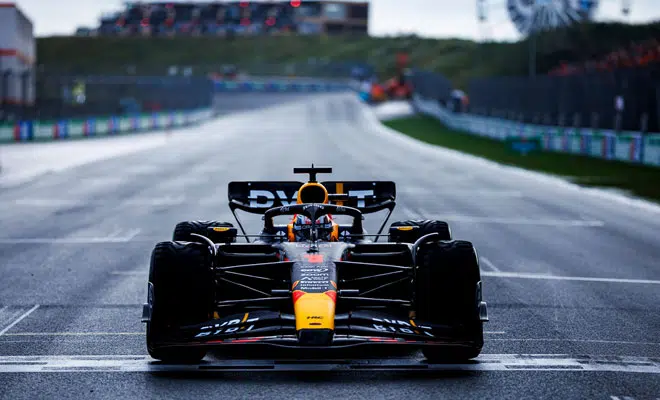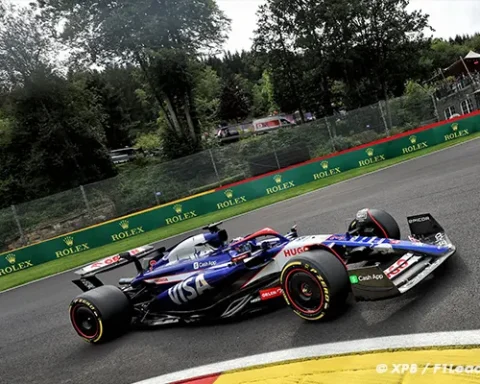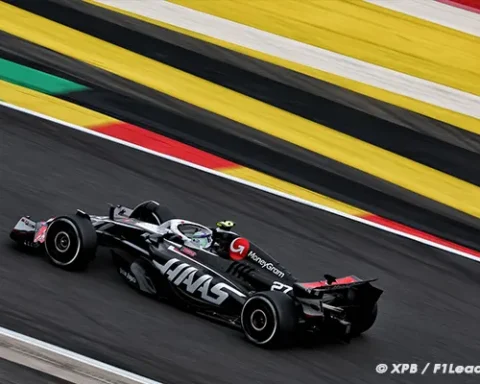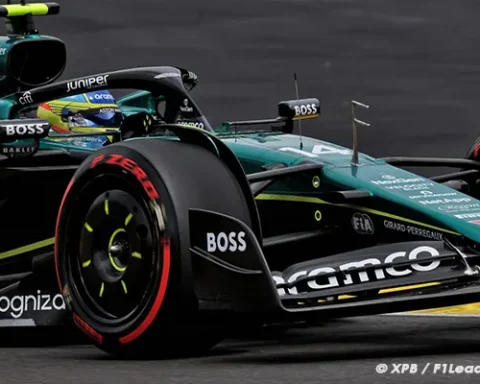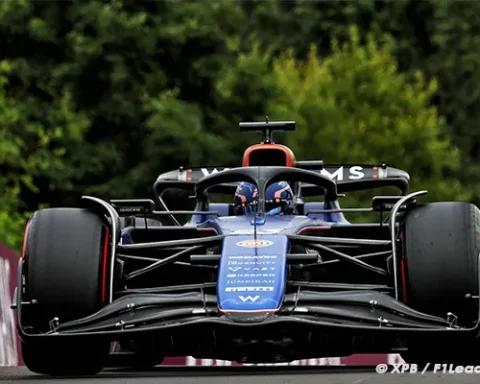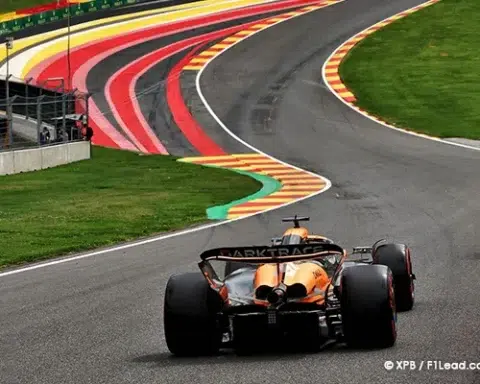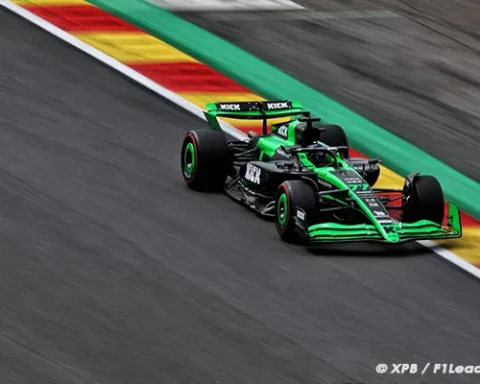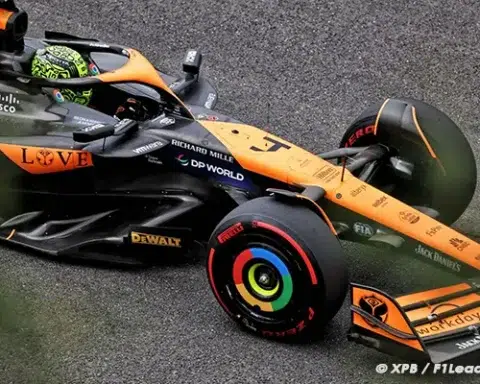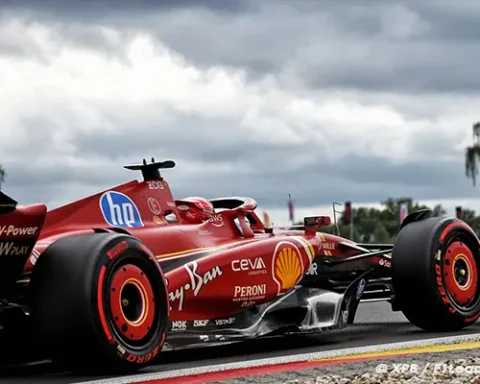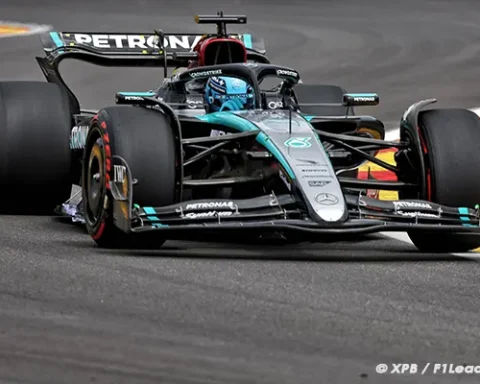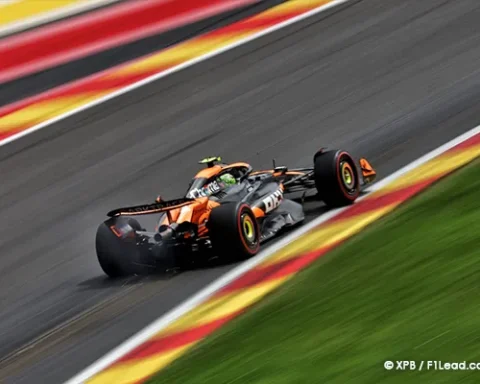As we bid farewell to the year 2023, it’s time to take a comprehensive look back at the highlights and defining moments that shaped this remarkable period in the world of Formula 1. In this in-depth analysis, we’ll delve into Max Verstappen’s commanding presence, the age-defying resurgence of Fernando Alonso, Mercedes’ substantial challenges stemming from their car design, and the intriguing discussions surrounding the Sprint race format. Join us on this journey through a year that will be remembered for its thrilling twists and turns in the Formula 1 landscape.
Alonso at 42: Defying Age with F1 Mastery in 2023
Celebrating his 42nd birthday mid-season, Alonso has persistently demonstrated through his F1 return that age is merely a number, not a barrier. This assertion became more pronounced following his departure from Alpine, spurred by the team’s doubts over his longevity in the sport. Alonso’s fourth-place finish in the drivers’ championship, his highest since 2013, along with eight podiums, a pivotal role in Aston Martin’s ascent, and a notable victory over his much younger teammate Lance Stroll, emphatically underscored his point.
Looking ahead, if Aston Martin can reclaim its early-season form, Alonso is well-positioned to become the first F1 race-winner over 40 since Nigel Mansell in 1994. While Alonso has quipped that race results aren’t dictated by one’s birthdate, the scarcity of over-40 successes in F1 does highlight age as a potential factor. Nonetheless, Alonso’s continued defiance of this trend is nothing short of remarkable.
A prime illustration of Fernando Alonso’s enduring raw, instinctual talent is his prowess during the opening laps of a race. This is why his unexpected spin at the first corner in Las Vegas was such a startling anomaly, given his usual excellence in navigating the initial chaos of a race. Alonso’s instinctual skill typically sees him swiftly maneuvering past issues and advancing his position right from the start.
Alonso Excels as Mercedes Faces 2023 Strategy Flaws
In comparison, when Michael Schumacher returned to F1 with Mercedes F1 team, Nico Rosberg seemed to overshadow him, setting a new benchmark. Similarly, for several years, it appeared as if Kimi Raikkonen was merely coasting on his previous achievements while at Ferrari. In contrast, Alonso continues to compete at the highest level. The impression he gives is one of ‘maximum Alonso’ — a driver who is not content with merely being marginally faster than his teammate Lance Stroll but is constantly pushing the limits of his performance.
Mercedes, beguiled by its late-2022 advancements and victory at the Brazilian Grand Prix, chose to slightly refine rather than overhaul its initial design concept for the new ground effect era. This decision led to a dramatic underperformance, evident during testing and confirmed by the season’s start: the car was simply not competitive enough to challenge Red Bull.
The modifications required to rectify the situation were too substantial for in-season adjustments, forcing Mercedes to endure a year focused on minimizing losses. The team managed to secure second in the constructors’ championship but fell significantly behind its previous year’s performance, ending over 100 points shy of its last third-place score and nearly doubling its deficit to Red Bull. Notably, this marked the first year without a win for Mercedes since 2011.
Mercedes’ 2023: Strategy Missteps and Big Changes Ahead
Debates raged over whether the sidepods or other components were to blame, but none of the changes made a significant difference. Unlike the previous year, Mercedes did not end this season optimistic about salvaging its concept. There was no misleading victory to keep hopes alive. Instead, the team faces a clear directive for substantial changes in the coming year. This season was a critical test for Mercedes’ independent design approach, and the verdict on its efficacy was delivered decidedly early.
James Allison has acknowledged a significant oversight in Mercedes’ strategy: the team attributed its issues solely to the porpoising and bouncing experienced last year. Believing that resolving these issues would suffice, Mercedes failed to adequately address the concerns raised by its drivers. The team initially dismissed the drivers’ reports of entry instability as merely a byproduct of the porpoising, only to later realize that the problem was more complex and rooted in other aspects of the car’s performance. This misjudgment led to a deeper evaluation of the vehicle’s underlying issues beyond what was initially perceived as the primary problem.
Mercedes is gearing up to introduce a completely redesigned car next year, featuring substantial changes to the monocoque, gearbox, and rear suspension. The pivotal question remains: will Mercedes successfully implement the necessary modifications?
Piastri Shines, F1 Sprints Underwhelm in 2023
Oscar Piastri’s stellar junior career, coupled with the intense competition between Alpine and McLaren for his services, foreshadowed a promising debut in F1. His inaugural season delivered on that promise, highlighted by a victory in the Qatar sprint and a front-row start at the Japanese Grand Prix. Remarkably, Piastri outqualified his highly esteemed teammate Lando Norris seven times, making him the first rookie since Lewis Hamilton to secure multiple podiums in his debut year. His exceptional one-lap speed, combined with a rigorous work ethic and a rapid learning curve, lays a solid foundation for his future in grand prix racing.
Meanwhile, F1’s attempt to invigorate its sprint format with a separate shootout qualifying session for Saturday’s sprint has received mixed reactions. The altered weekend schedule, including Friday evening qualifying for a race two days later, has disrupted the rhythm of the events and led to some peculiar statistics and strategic challenges. Despite the occasional excitement, the revised sprint format has introduced complexities and controversies that have overshadowed its intended benefits.
Currently, the sprint format in Formula 1 is essentially a condensed version of the initial phase of a grand prix, which has led to questions about its significance and distinctiveness within the race weekend. Although the format has moved past the initial confusion of having the official pole-sitter not starting the grand prix from the front, it now faces the challenge of establishing its unique value.
Rethinking F1 Sprints: Seeking More Than Speed
The sprint needs to be more than just a diluted repetition of the grand prix; it must offer a distinct and engaging experience. As it is, many view the sprint race as somewhat redundant and lacking in impact compared to the grand prix, which carries a weight of history and significance. There’s a prevailing sentiment that the sprints feel inconsequential and do not meaningfully contribute to the sport’s legacy or the weekend’s excitement.
2023 F1 Review: Verstappen’s Dominance
Meanwhile, Red Bull’s performance has often been more pronounced in race conditions than in single-lap speed, with Verstappen securing 12 grand prix poles and an additional four front-row starts. Despite this, the team’s overall strategy and performance during these sprint weekends have been under scrutiny, with Perez’s performance fluctuating significantly after an early-season pole position in Miami. The question remains on how to balance the traditional grand prix format with the introduction of sprints, ensuring that both remain relevant and exciting for fans and participants alike.
At the season’s outset, there was a palpable anticipation of a potential championship battle. However, as the races progressed, Sergio Perez experienced a notable dip in confidence, reflected in his performance. With only one top-four start in the last 16 grand prix and failing to reach Q3 nine times in a car that clinched the constructors’ championship, Perez’s struggles were significant, especially compared to the previous record held by Mark Webber with Red Bull in 2012.
Despite these challenges, Perez finished the season 51 points ahead of the third-place driver in the championship. However, it’s worth noting that 49 of those points were accumulated in the first five races. As the season continued, Perez’s form fluctuated, and there were moments where he seemed significantly outpaced.
This performance led to speculation about the security of his seat, especially considering his strenuous journey to secure second place in the championship. In previous seasons, teams like Mercedes retained driver pairings like Valtteri Bottas and Lewis Hamilton when they consistently secured the top two spots in the championship. It was only when a formidable rival emerged that Mercedes considered a change. This context adds an additional layer to the scrutiny of Perez’s position and the decisions facing his team.
2023 F1 Summary: Verstappen’s Overview
The current scenario presents a car that, while not optimized for qualifying, excels in race conditions. This aligns with a driver who, despite not being among the elite qualifiers in F1, showcases exceptional reliability and performance during races when given a car that instills confidence.
Max Verstappen has the ability to compensate for the car’s limitations during qualifying and consistently delivers outstanding performances on race days. In contrast, Sergio Perez often finds himself at a disadvantage on the starting grid due to a combination of his modest qualifying skills and the car’s suboptimal setup. This often relegates him to a defensive strategy. As Red Bull contemplates the future, especially if facing increased competition, this dynamic could prove costly.
The introduction of current regulations has narrowed the performance gap between the front and back of the grid. However, efforts to diminish the effects of ‘dirty air’ and enhance overtaking have not met expectations. Despite a tightly packed field, Red Bull’s dominance continues, and the vision of a fiercely contested championship with multiple teams vying for the title and increased on-track overtaking remains elusive.
The initial optimism surrounding Formula 1’s rule changes in 2022 has faced a setback this year, with a noticeable regression in their effectiveness. In 2021, following cars lost up to half their downforce when within three car lengths of a competitor. The objective for 2022 was to reduce this loss to 15-20%, yet recent observations by the FIA indicate that the loss is currently around 35%.
F1’s 2023 Rules: Loopholes Limit Overtaking Hopes
The teams’ adaptations and interpretations of the regulations in their second year have exacerbated the ‘dirty air’ problem. Except for Red Bull, most cars are still not adept at maintaining efficient downforce when trailing another vehicle. This is particularly disheartening given the extensive research and promotion of these rules as a significant step forward for the sport.
The FIA has acknowledged certain loopholes in the regulations, which it admits could have been addressed earlier and now might not be rectified until 2026. This situation leaves a sense of dissatisfaction among those who had hoped for more substantial improvements. While no one expected F1 to replicate the overtaking dynamics of lower formulae, the expectations for a more competitive and engaging racing environment were certainly higher than what has been witnessed this year.
F1 2023 Recap Verstappen Alonso F1 2023 Recap Verstappen Alonso F1 2023 Recap Verstappen Alonso F1 2023 Recap Verstappen Alonso F1 2023 Recap Verstappen Alonso F1 2023 Recap Verstappen Alonso
After a decade, Schumacher remains in fans’ hearts
Stay up-to-date with the latest Formula 1 news by following us on Facebook and Twitter.
